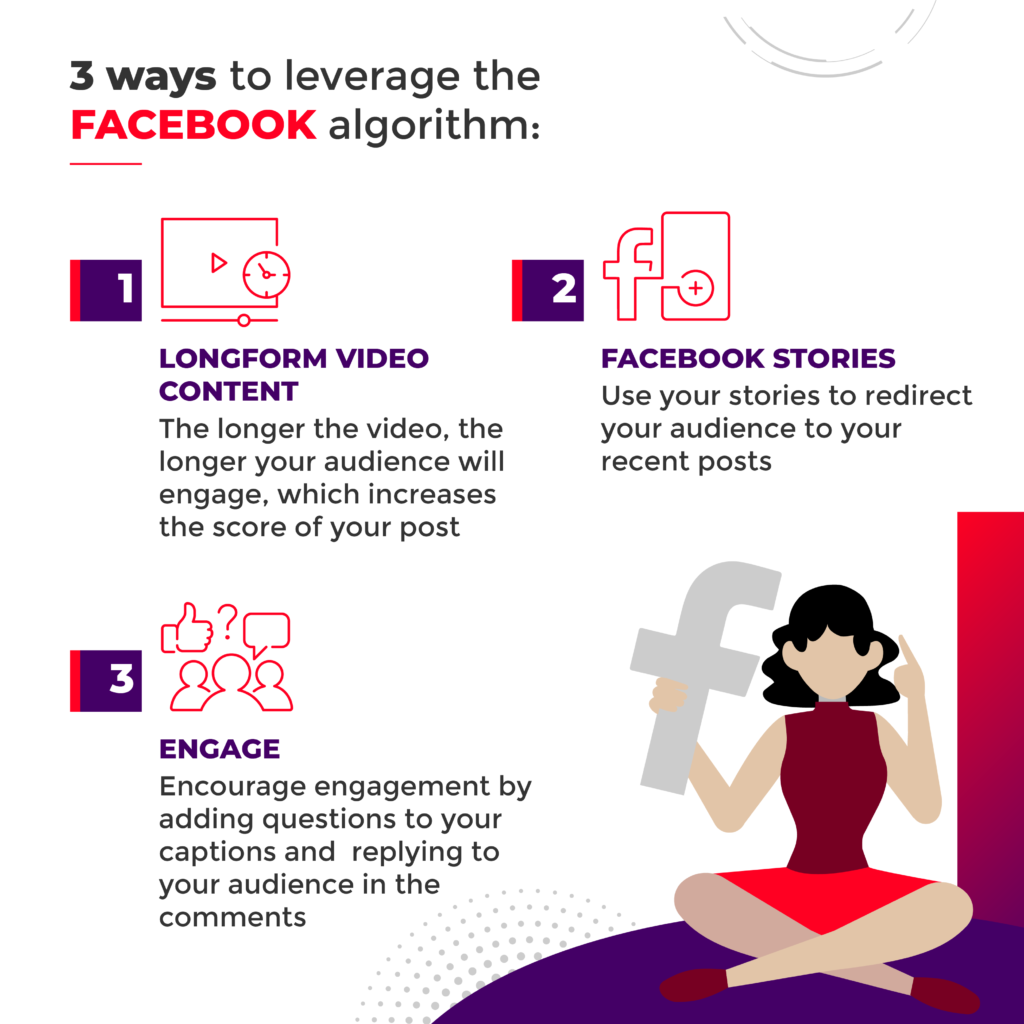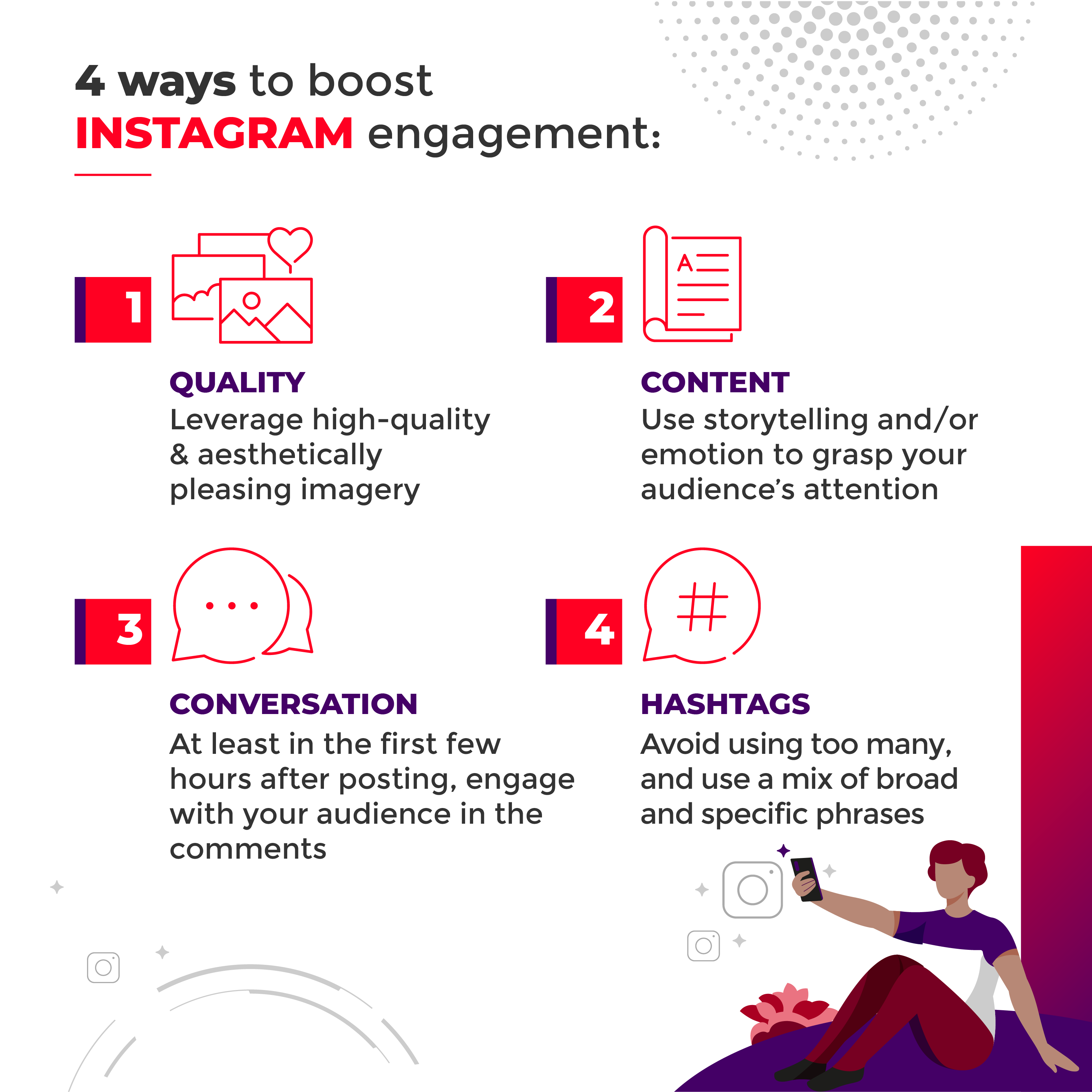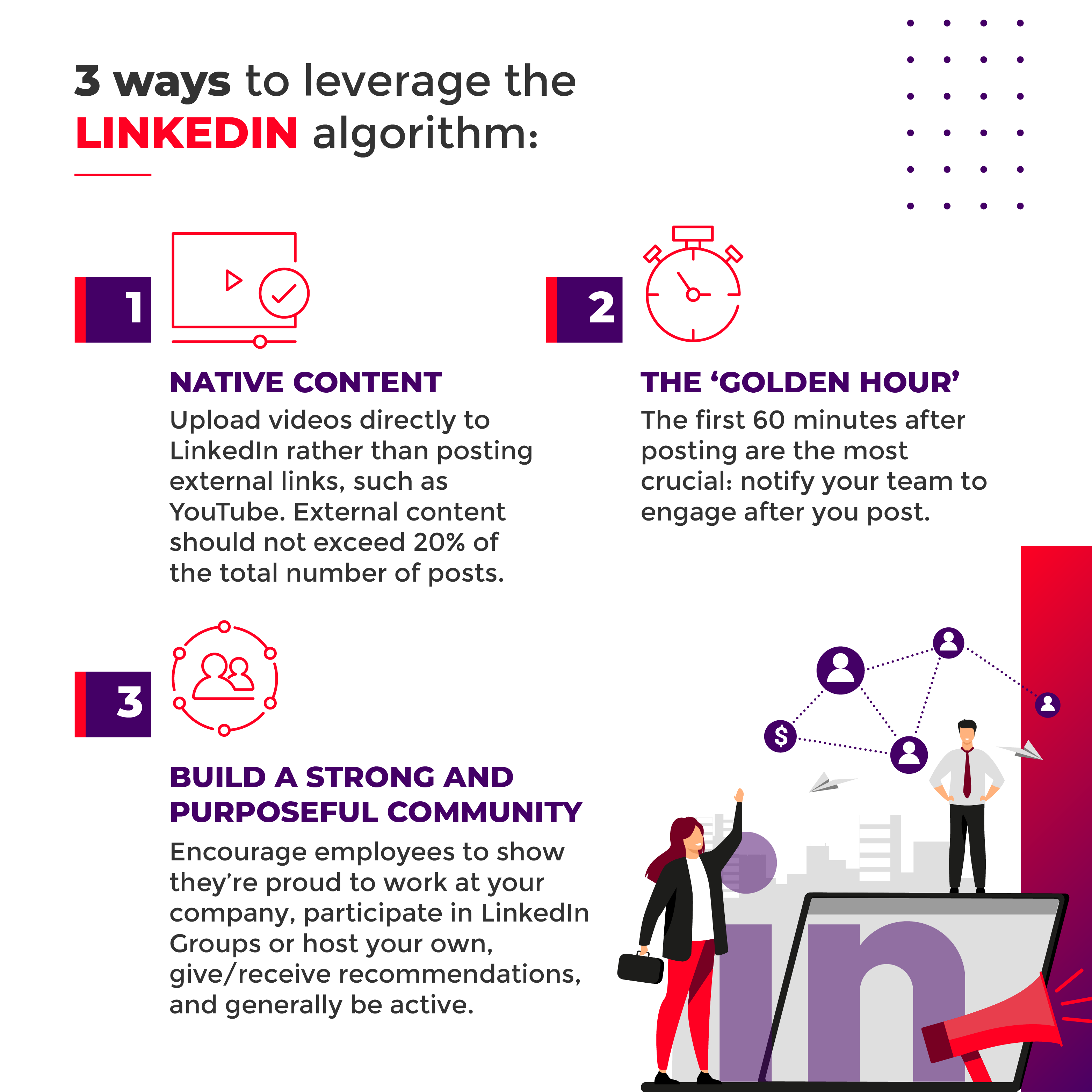
How to Decode Mysterious Social Media Algorithms: Part 2
This is a continuation of our how to decode mysterious social media algorithms series. In Part 2 we will discuss how the algorithm differs per social media platform.
Social media platform algorithms
Social media algorithms are automated calculations based on data that determine which content users see on their feed and in which order. If you want to learn more about them, read Part One of this article here. Social media algorithms can be complicated, are ever changing and evolving – with updates, tweaks and changes pushed out frequently which are hard to keep up with. But we have you covered. With our hacks you can go after the holy grail – organic traffic. Read on below as we take a peek under the hood of Facebook’s, Instagram’s and LinkedIn’s algorithm.

Facebook is all about network and relationship. More than 2.7 billion users use Facebook globally[1] and the average engagement rate on Facebook is 0.27%[2]. Like all other platforms, the Facebook algorithm will show the posts that are most relevant to its users.
- Relationship– Who shared the post? Facebook ranks content from friends and family above brands.
- Content type– What type of content do your viewers engage with the most? (Videos, Images, text etc.)
- Popularity– How is the post performing so far? Are people engaging with the post?
- Recency– How recent is the post? Newer posts are ranked higher in the newsfeed.
3 tips for making Facebook’s algorithm work for you:
- Longform video content– In 2021, video is the king of content. By 2022, 82% of all internet traffic will be video content[3]. Video generates more engagement than any other form of content. The longer the video, the longer the audience will engage with your post, which will increase the score of the post and will be rewarded by the algorithm.
- Facebook stories – The good news is that Facebook stories are not (yet) led by its algorithm. Take advantage of this and make stories a regular part of your content strategy. Dynamic stories present numerous possibilities to create engagement. Use stories to promote a post, showcase new products, and share tips and tricks.
- Engage with your audience– Remember Facebook is all about networking! Reply to your audiences, ask questions (in the caption or comments), and find other ways to boost interaction. Join Facebook groups where your audience resides and drive or participate in conversations. Again, experiment with different outlets to engage, explore FB live and stories, and be where the audience wants you to be.
Instagram is the largest photo and video sharing platform worldwide. Instagram’s organic engagement rate stands at 1.22% in 2021[1]. Similar to its parent company Facebook, Instagram feeds revolve around what the users care about the most.
Instagram ranks content based on:
- Interest– Content is based on the interests of the user.
- Recency and frequency– Recent posts are prioritized over old posts. Frequency of posting is also rewarded.
- Relationship– Instagram prioritizes posts from friends and family over posts from brands.
- Usage– The more time users spend on your post, the higher your content’s score will be.

3 tips for making Instagram’s algorithm work for you:
- Content quality– Great content in terms of quality and information gets rewarded. The most shared content on Instagram is often the most visually striking. Use visuals that stand out, are high quality, and use storytelling with a sprinkle of emotion. That should do the trick.
- Engagement– The first few hours after you post are critical for engagement. If your post can gather engagement in the first 3 hours, Instagram’s algorithm will reward the post and increase the reach of the post[2]. So, optimize your caption to engage with your audience and encourage them to save, like share your content. Use various posting options like Stories, Feed, Reels, Live and IGTV. Be wherever your audience is and provide them various types of content to consume. Leverage Instagram stories to drive engagement using polls, questions, sliders or to just promote your most recent post.
- Hashtags– Hashtags aren’t useful on most other platforms but are still relevant for Instagram. They can help attract new eyes and skyrocket the reach. Target relevant hashtags with up to 10k -200k posts depending on your industry to provide the right kind of traffic. Avoid using too many hashtags, as this will most likely flag your post as spam by Instagram’s algorithm. Stick to a sweet number of 6-8 highly targeted hashtags.

LinkedIn is the world’s largest professional network and B2B marketers’ preferred platform for content distribution. The average engagement rate on LinkedIn has been 0.35% in 20215. Also, 89% of B2B marketers use LinkedIn for content sharing6.
LinkedIn ranks its content based on:
- Content quality – LinkedIn’s algorithm categorizes all posted content into three clear categories: ‘spam,’ ‘low quality,’ and ‘clear.’ The objective is to create your content so it will be successfully categorized as ‘clear.’ This can be achieved by creating/posting content which is favored by its algorithm:
- Native content such as text posts, images with text, and videos with text. Infographics are highly recommended along with the usage of LinkedIn’s own native video format instead of sharing YouTube links. Videos still seem to have a slight advantage over static content.
- Question based posts.
- The latest news from the relevant industry and upcoming trends.
- Employee recognition, human stories with long captions (career advice, work/personal experiences with life lessons), personal/ business accomplishments.
- ‘Meaningful’ engagement – The algorithm will prioritize content that has received a high amount of engagement. LinkedIn prefers meaningful engagement in the comments section, which means posts with lengthy, quality comments are awarded over mere likes, reactions, or even links posted as comments. Furthermore, if the audience spends significant time digesting your content/posts, the algorithm improves the likelihood of more people seeing your content on LinkedIn.
- Influencers – If you tag users with a high reach on LinkedIn (especially if they engage with your content), such as C-suite executives from big corporations, your content will be much more likely to increase its reach.
- Frequency of posting content – The algorithm favors consistency over random/ad hoc posts. The algorithm will reward consistency, and posting 1-2 times per week seems to be the sweet spot.
3 tips for making LinkedIn’s algorithm work for you:
- Native content – Videos uploaded using LinkedIn’s native format is preferred over external links such as YouTube. Authors/creators replying with external links in comments may also see their content/posts penalized with lower reach/engagement.
- External content should not exceed 20% of the total number of posts.
- Use the LinkedIn Publisher Tool, as the platform is making conscious efforts to promote/push posts which originate from their Publisher tool, which end up on LinkedIn Pulse (now integrated with the homepage feed).
- Leverage the ‘golden hour’ – The first 60 minutes after posting content are the most crucial part of your content marketing success – this is the ‘golden hour’ for your post. If reaction to your post is low during this time, the likelihood of your post performing well are low. Aim for 20+ engagements (replies or comments) in the first half by notifying your employees about the post. Use your internal communication mediums, such as Slack, Trello, or Teams, to inform everyone about the post and ask them to participate.
- Build a strong and purposeful community – Encourage employees to show they’re proud to work at your company, encourage partners to show they collaborate/work with you, participate in LinkedIn Groups or host your own, give/receive recommendations, join conversations, use LinkedIn messaging to share content privately with smaller sets of audiences, and be active on the network.
- React/respond to every comment on your post. Engaging with new followers is a must.
- Use mentions and hashtags.
- If you’re sharing someone’s quote or interview, give them credit or inform them by tagging them in your post so that they can share it with their followers too.
So, what next?
Now that you have the secret sauce to leverage social media algorithms across all platforms along with platform specific strategies to increase the reach of your content, it’s time to get started. Social networks are all about community and sharing the solution that your audience is seeking. Whether you are taking your first steps in setting up the social media presence for your brand or are a seasoned veteran – persistence is key. It’s important to keep evolving your social media and content strategy as the algorithms evolve. Work with the algorithm and it will reward your content and help grow your account.
Looking for more marketing expertise?
Sign up for our newsletter
"(Required)" indicates required fields
YOU MAY ALSO LIKE…

How to add Video to your Digital Marketing Strategy
Digital marketing without video has become unthinkable. Now more than ever, marketers are using video to get their message across.
Read more
